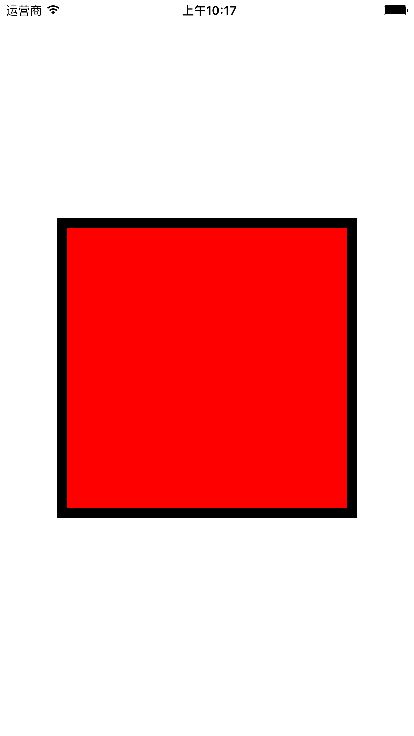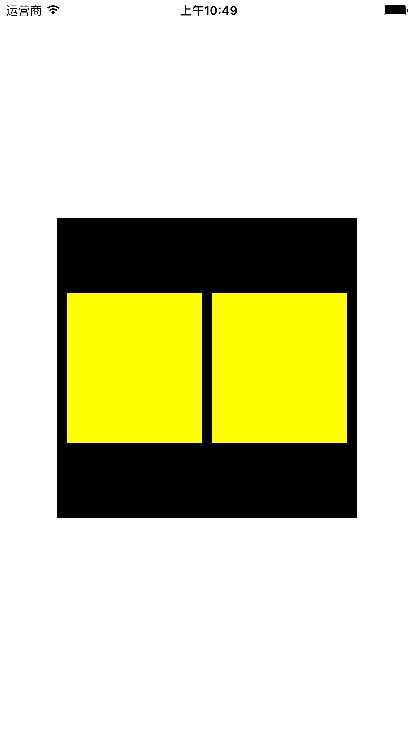介绍
Masonry是一个轻量级的布局框架 拥有自己的描述语法 采用更优雅的链式语法封装自动布局 简洁明了 并具有高可读性 而且同时支持 iOS 和 Max OS X。可以通过cocoapods将其导入。
使用
Masonry属性及其说明
//左侧
//@property (nonatomic, strong, readonly) MASViewAttribute *mas_left;
//上侧
//@property (nonatomic, strong, readonly) MASViewAttribute *mas_top;
//右侧
//@property (nonatomic, strong, readonly) MASViewAttribute *mas_right;
//下侧
//@property (nonatomic, strong, readonly) MASViewAttribute *mas_bottom;
//首部
//@property (nonatomic, strong, readonly) MASViewAttribute *mas_leading;
//尾部
//@property (nonatomic, strong, readonly) MASViewAttribute *mas_trailing;
//宽度
//@property (nonatomic, strong, readonly) MASViewAttribute *mas_width;
//高度
//@property (nonatomic, strong, readonly) MASViewAttribute *mas_height;
//横向中点
//@property (nonatomic, strong, readonly) MASViewAttribute *mas_centerX;
//纵向中点
//@property (nonatomic, strong, readonly) MASViewAttribute *mas_centerY;
//文本基线
//@property (nonatomic, strong, readonly) MASViewAttribute *mas_baseline;
其中leading与left trailing与right 在正常情况下是等价的 但是当一些布局是从右至左时(比如阿拉伯文?没有类似的经验) 则会对调 换句话说就是基本可以不理不用 用left和right就好了
首先,宏定义一个self用于Block内部,防止循环引用
#define WS(weakSelf) __weak __typeof(&*self)weakSelf = self;
下面通过实例进行介绍
1.居中显示一个View
WS(ws);
UIView *sv = [UIView new];
sv.backgroundColor = [UIColor blackColor];
[self.view addSubview:sv];
[sv mas_makeConstraints:^(MASConstraintMaker *make) {
make.center.equalTo(ws.view);
make.size.mas_equalTo(CGSizeMake(300, 300));
}];
代码效果:
首先在Masonry中能够添加autolayout约束有三个函数
- (NSArray *)mas_makeConstraints:(void(^)(MASConstraintMaker *make))block;
/**
* Creates a MASConstraintMaker with the callee view.
* Any constraints defined are added to the view or the appropriate superview once the block has finished executing.
* If an existing constraint exists then it will be updated instead.
*
* @param block scope within which you can build up the constraints which you wish to apply to the view.
*
* @return Array of created/updated MASConstraints
*/
- (NSArray *)mas_updateConstraints:(void(^)(MASConstraintMaker *make))block;
/**
* Creates a MASConstraintMaker with the callee view.
* Any constraints defined are added to the view or the appropriate superview once the block has finished executing.
* All constraints previously installed for the view will be removed.
*
* @param block scope within which you can build up the constraints which you wish to apply to the view.
*
* @return Array of created/updated MASConstraints
*/
- (NSArray *)mas_remakeConstraints:(void(^)(MASConstraintMaker *make))block;
mas_makeConstraints 只负责新增约束 Autolayout不能同时存在两条针对于同一对象的约束 否则会报错
mas_updateConstraints 针对上面的情况 会更新在block中出现的约束 不会导致出现两个相同约束的情况
mas_remakeConstraints 则会清除之前的所有约束 仅保留最新的约束
三种函数善加利用 就可以应对各种情况了
其次 equalTo 和 mas_equalTo的区别在哪里呢? 其实 mas_equalTo是一个MACRO
#define mas_equalTo(...) equalTo(MASBoxValue((__VA_ARGS__)))
#define mas_greaterThanOrEqualTo(...) greaterThanOrEqualTo(MASBoxValue((__VA_ARGS__)))
#define mas_lessThanOrEqualTo(...) lessThanOrEqualTo(MASBoxValue((__VA_ARGS__)))
#define mas_offset(...) valueOffset(MASBoxValue((__VA_ARGS__)))
#ifdef MAS_SHORTHAND_GLOBALS
#define equalTo(...) mas_equalTo(__VA_ARGS__)
#define greaterThanOrEqualTo(...) mas_greaterThanOrEqualTo(__VA_ARGS__)
#define lessThanOrEqualTo(...) mas_lessThanOrEqualTo(__VA_ARGS__)
#define offset(...) mas_offset(__VA_ARGS__)
#endif
可以看到 mas_equalTo只是对其参数进行了一个BOX操作(装箱) MASBoxValue的定义具体可以看看源代码 太长就不贴出来了
所支持的类型 除了NSNumber支持的那些数值类型之外 就只支持CGPoint CGSize UIEdgeInsets
2.让一个View略小于其SuperView(边距10)
UIView *sv1 = [UIView new];
sv1.backgroundColor = [UIColor redColor];
[sv addSubview:sv1];
[sv1 mas_makeConstraints:^(MASConstraintMaker *make) {
make.edges.equalTo(sv).width.insets(UIEdgeInsetsMake(10, 10, 10, 10));
/*等价于
make.top.equalTo(sv).with.offset(10);
make.left.equalTo(sv).with.offset(10);
make.bottom.equalTo(sv).with.offset(-10);
make.right.equalTo(sv).with.offset(-10);
*/
/*也等价于
make.top.left.bottom.and.right.equalTo(sv).with.insets(UIEdgeInsetsMake(10, 10, 10, 10));
*/
}];
代码效果
可以看到 edges 其实就是top,left,bottom,right的一个简化 分开写也可以 一句话更省事
那么为什么bottom和right里的offset是负数呢? 因为这里计算的是绝对的数值 计算的bottom需要小鱼sv的底部高度 所以要-10 同理用于right
3.让两个高度为150的view垂直居中且等宽且等间隔排列 间隔为10(自动计算其宽度)
int padding1 = 10;
UIView *sv2 = [UIView new];
sv2.backgroundColor = [UIColor yellowColor];
[sv addSubview:sv2];
UIView *sv3 = [UIView new];
sv3.backgroundColor = [UIColor yellowColor];
[sv addSubview:sv3];
[sv2 mas_makeConstraints:^(MASConstraintMaker *make) {
make.centerY.mas_equalTo(sv.mas_centerY);
make.left.equalTo(sv.mas_left).with.offset(padding1);
make.right.equalTo(sv3.mas_left).with.offset(-padding1);
make.height.mas_equalTo(@150);
make.width.equalTo(sv3);
}];
[sv3 mas_makeConstraints:^(MASConstraintMaker *make) {
make.centerY.mas_equalTo(sv.mas_centerY);
make.left.equalTo(sv2.mas_right).with.offset(padding1);
make.right.equalTo(sv.mas_right).with.offset(-padding1);
make.height.mas_equalTo(@150);
make.width.equalTo(sv2);
}];
代码效果
这里我们在两个子view之间互相设置的约束 可以看到他们的宽度在约束下自动的被计算出来了
4.在UIScrollView顺序排列一些View并自动计算contentSize
UIScrollView *scrollView = [UIScrollView new];
scrollView.backgroundColor = [UIColor whiteColor];
[sv addSubview:scrollView];
[scrollView mas_makeConstraints:^(MASConstraintMaker *make) {
make.edges.equalTo(sv).width.insets(UIEdgeInsetsMake(5, 5, 5, 5));
}];
UIView *container = [UIView new];
[scrollView addSubview:container];
[container mas_makeConstraints:^(MASConstraintMaker *make) {
make.edges.equalTo(scrollView);
make.width.equalTo(scrollView);
}];
int count = 10;
UIView *lastView = nil;
for (int i = 1; i <= count; ++i) {
UIView *subv = [UIView new];
[container addSubview:subv];
subv.backgroundColor = [UIColor colorWithHue:( arc4random() % 256 / 256.0 )
saturation:( arc4random() % 128 / 256.0 ) + 0.5
brightness:( arc4random() % 128 / 256.0 ) + 0.5
alpha:1];
[subv mas_makeConstraints:^(MASConstraintMaker *make) {
make.left.and.right.equalTo(container);
make.height.mas_equalTo(@(20 * i));
if (lastView) {
make.top.mas_equalTo(lastView.mas_bottom);
}else{
make.top.mas_equalTo(container.mas_top);
}
}];
lastView = subv;
}
[container mas_makeConstraints:^(MASConstraintMaker *make) {
make.bottom.equalTo(lastView.mas_bottom);
}];
头部效果
尾部效果
从scrollView的scrollIndicator可以看出 scrollView的内部已如我们所想排列好了
这里的关键就在于container这个view起到了一个中间层的作用 能够自动的计算uiscrollView的contentSize
Masonry的基本介绍就是这样




